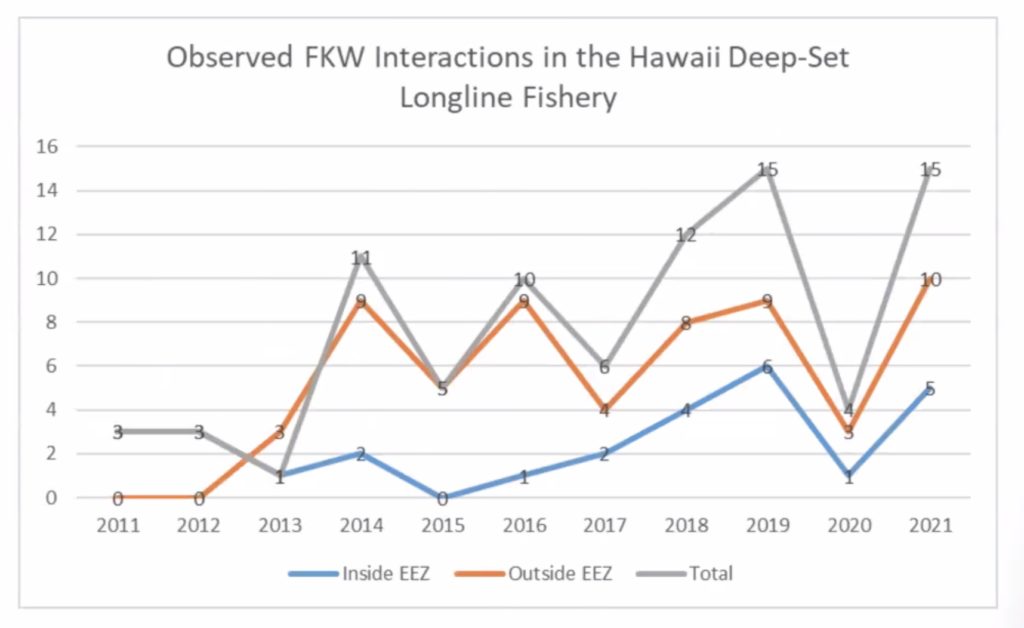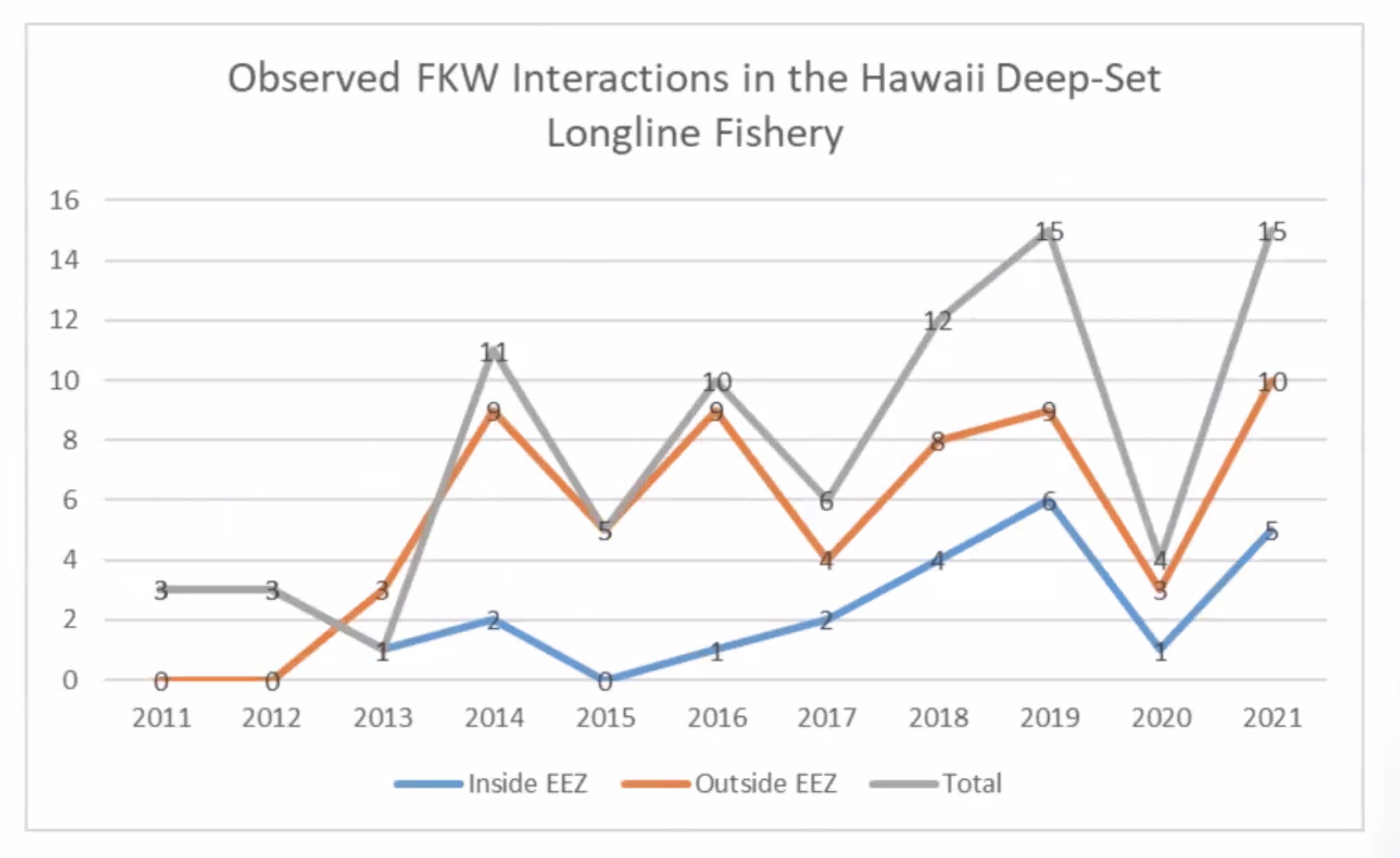Whales on the Line, I: Last year, the Hawai`i-based longline tuna fleet hooked five false killer whales inside the Exclusive Economic Zone around Hawai`i. All of the animals were determined to have been mortally or seriously injured (M/SI) by the interaction with fishing gear.
Under a formula that involves the extent of observer coverage of the fleet and an assessment of the number of animals that can be removed from the population without jeopardizing its ability to recover, the National Marine Fisheries Service sets a limit on the number of animals that can be killed or seriously injured inside the EEZ. If that number is hit, the National Marine Fisheries Service is to close to longliners a large area of fishing grounds south of the islands – the so-called Southern Exclusion Zone (SEZ) — amounting to about 17 percent of the ocean inside the EEZ. The closure is to remain in place until the end of the year. In recent years, the trigger for closure of the SEZ has been set at four M/SI.
But with the fourth and fifth takes occurring on November 19 and December 8, and with NMFS taking weeks to determine that the animals were grievously injured or killed, the fleet avoided any consequences for having exceeded the limit. Once January 1 rolled around, the meter was reset to zero.
By January 24, the longliners had already taken three false killer whales, one of which was inside the EEZ. Although NMFS had not made an official injury determination by press time, almost certainly the interaction will be judged an M/SI, given that the fishing crew released the animal by cutting the line, leaving it with about eight meters of line trailing from its mouth.

Whales on the Line, II: In response to the high number of takes in 2021, the False Killer Whale Take Reduction Team met by video conference on February 3, one day before NMFS announced the two interactions that occurred in January.
Much of the discussion focused on the level of observer coverage last year. The lower the level, the fewer the number of animals that are allowed to be taken. On vessels with no observers, it is assumed (correctly) that captains do not report interactions with false killer whales. So to arrive at a truer picture of the full extent of interactions, the actual number of observed interactions is divided by the overall percentage of observer coverage fleet-wide.
In recent years, observer coverage has been around 20 percent, or one in five trips. So, as an example, if four whales are observed to have been taken and seriously injured or killed, that would suggest the actual number is closer to 20 (five times the observed number). This exceeds the limit on the number of animals that can be removed from the population without harming its ability to reproduce, the so-called Potential Biological Removal (PBR). For 2021, the PBR was set at 16, meaning the PBR was exceeded by four.
Take those same four M/SI interactions but reduce the observer coverage to 16 percent, and the imputed actual number of M/SI interactions becomes 25, exceeding the PBR by more than 33 percent.
Dennis Heinemann, senior advisor for fisheries policy to the Marine Mammal Commission, spelled out the problem. “For the first three quarters [of 2021], the overall coverage was 17.6 percent. … If coverage is less than 18.8 percent for the year, the trigger [for SEZ closure] is three. In order to get to 18.8 percent, the fourth quarter observer coverage would have to be 23.7 percent or greater, which would be highly unusual.”
Kevin Brindock, of NMFS’ Protected Resources Division, said that last year was the first time this problem – of late-year serious interactions – had occurred. The agency was going to try to shorten the time between the hooking and the injury determinations, he said: “We can’t achieve real-time, but something closer to that.”
Heinemann criticized the use of the calendar year in setting and lifting the closure of the SEZ. “The closure was designed to achieve certain outcomes … providing incentives for the fishery to do better and also to protect the whales…. And yet, because it’s tagged to the calendar year, the later that trigger is reached in the year, the less the incentive becomes…. The fact that the SEZ was triggered last year means nothing in terms of management outcomes.”


Leave a Reply